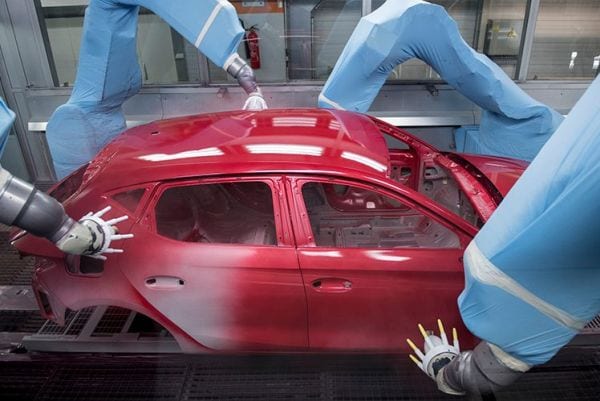Getting the color right on automobiles is incredibly important. Many people feel very connected to their cars and see them as an extension—or at least a reflection—of who they are. Appearance is therefore crucial. In many cases, the design of a vehicle is enhanced by the choice of paint applied to the surface—the color, sparkle, travel, and other special characteristics of automotive coatings manipulate light, enhancing the lines of a vehicle, and give it a distinct look and feel. These coatings must be highly durable and provide the same appearance over the lifetime of the vehicle. The coating application process is, therefore, an important component of a successful automotive paint job.
The Spanish car maker SEAT has taken this concept to the next level with its wellness center for cars. Located at SEAT’s production site in Martorell, near Barcelona, Spain, the wellness center includes nine “immersion pools” for preparation and corrosion pretreatment of car bodies and spray booths with pressure jets for paint application. “Every car body undergoes a beauty ritual in the paint area to ensure the best color outcome before taking to the road,” says Javier Pérez, the head of Paints at SEAT.
The first part of the beauty treatment involves repeated washing and rinsing in the immersion area to clean the metal of the car body. Sealants are then applied that prevent corrosion by reducing the risk of water infiltration and contribute to noise reduction in the vehicle cabin via sound dampening. Each car is then painted using pressurized jets that apply approximately 2.5 kg of coating/car. Some models offered by SEAT have nearly 70 possible color combinations, allowing for sophisticated customization. A combination of robots and skilled technicians make sure the right paint formulations are applied in the right areas of the vehicle at the right time. After each treatment in the immersion baths and the other areas of SEAT’s “spa,” drying and setting processes (curing) are performed in one of six ovens at temperatures varying from 45–180 °C for 30–35 min.
The last step is “chromotherapy” in which the vehicle slides through a scanner and no fewer than 50,568 photos are taken in 43 seconds by 28 cameras that capture 42 images/sec. The collected data is used to evaluate the bodywork to within one millimeter and make for any flaws or imperfections. Overall, each car is pampered by 1,100 workers and 200 robots for six hours, according to Pérez. After their visit to the wellness center, vehicles head off to the showroom.
